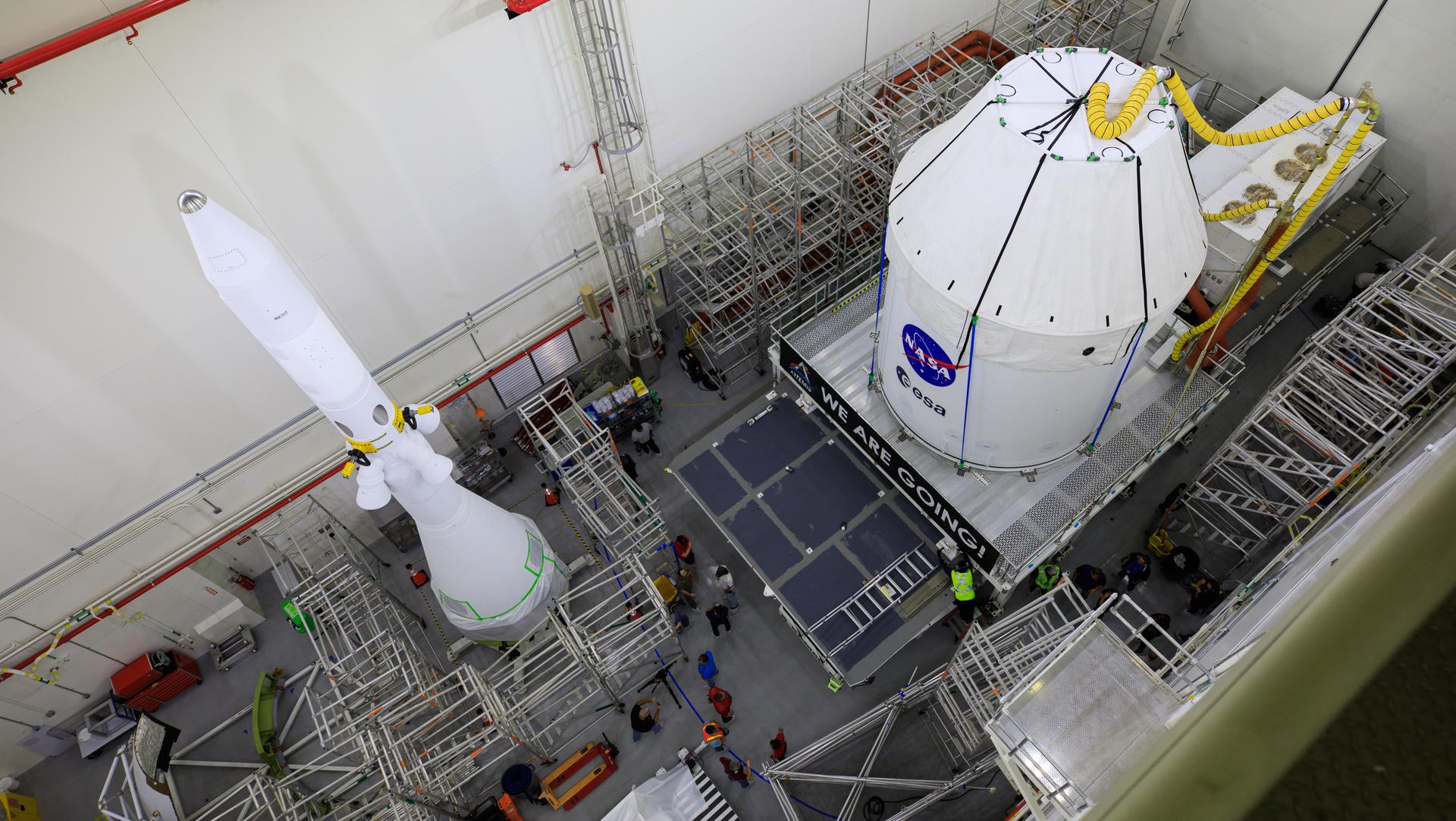NASA prepares 1st moonbound Orion spacecraft to receive its launch abort system

NASA's new Orion space capsule is one step closer to returning to space, this time for a mission around the moon.
The U.S. space agency released photos of the moonbound spacecraft moving between buildings at the Kennedy Space Center in Florida as part of launch preparations for Artemis 1, which is targeting an uncrewed trip around the moon by the end of 2021.
On Saturday (July 10), Orion moved from a payload processing facility to another building where it will receive the launch abort system, and NASA's Exploration Ground Systems Twitter channel documented the journey.
In photos: The Orion space capsule: NASA's next spaceship
"These photos show @NASA_Orion arriving at and inside of the Launch Abort System Facility (LASF) at @NASAKennedy, where teams will add the launch abort system (tall & thin structure seen here) to the top of the spacecraft for the launch of @NASAArtemis I," one of the tweets stated on Monday (July 12).
Orion, which is flying for the first time since an Earth-orbiting test in 2014, will be thrust into space by NASA's unflown Space Launch System megarocket for deep-space destinations. SLS encountered several technical issues during testing in Mississippi in late 2020 and early 2021 before shipping to Florida. In June, NASA personnel stacked the SLS stages at Kennedy, and Orion is scheduled to go atop the rocket by the end of the summer.
Short time lapse showing @NASA_Orion arriving at the Launch Abort System Facility (LASF) today at @NASAKennedy, where teams will add the launch abort system atop the spacecraft. #Artemis pic.twitter.com/r87ufZ1TnsJuly 10, 2021
Artemis 1 will be a crucial uncrewed test of the moon program ahead of expected landings by astronauts. During the flight, Orion will swing around the moon carrying sensors and simulated human bodies to measure radiation and stress levels in deep space. Its "passengers" include a "moonikin" recently named for an Apollo 13 engineer.
Breaking space news, the latest updates on rocket launches, skywatching events and more!
Following Artemis 1 will be a crewed mission around the moon called Artemis 2, perhaps as soon as 2023. A crewed landing may follow, which NASA is hoping to fly in late 2024. No astronauts have been publicly named for these missions, although a Canadian astronaut will fly around the moon on Artemis 2 as a thank-you for the country's promise to build a Canadarm3 robotic arm for the forthcoming Gateway lunar space station.

In its $24.8 billion budget request for NASA, released in May, President Joe Biden's administration suggested a 5% increase in funding for deep-space exploration systems to $6.88 billion; this budget line includes hardware for Artemis. At the time, NASA chief financial officer Steve Shinn said the landing missions could be delayed.
"I know the goal is 2024, but I think we have to be brutally realistic," Shinn said in a news conference when the budget proposal was released. "Because space development is so hard, there could be delays to that schedule for the first demonstration flight of landing humans [on the moon] and returning them safely to Earth."
Follow Elizabeth Howell on Twitter @howellspace. Follow us on Twitter @Spacedotcom and on Facebook.
Join our Space Forums to keep talking space on the latest missions, night sky and more! And if you have a news tip, correction or comment, let us know at: community@space.com.

Elizabeth Howell (she/her), Ph.D., was a staff writer in the spaceflight channel between 2022 and 2024 specializing in Canadian space news. She was contributing writer for Space.com for 10 years from 2012 to 2024. Elizabeth's reporting includes multiple exclusives with the White House, leading world coverage about a lost-and-found space tomato on the International Space Station, witnessing five human spaceflight launches on two continents, flying parabolic, working inside a spacesuit, and participating in a simulated Mars mission. Her latest book, "Why Am I Taller?" (ECW Press, 2022) is co-written with astronaut Dave Williams.
